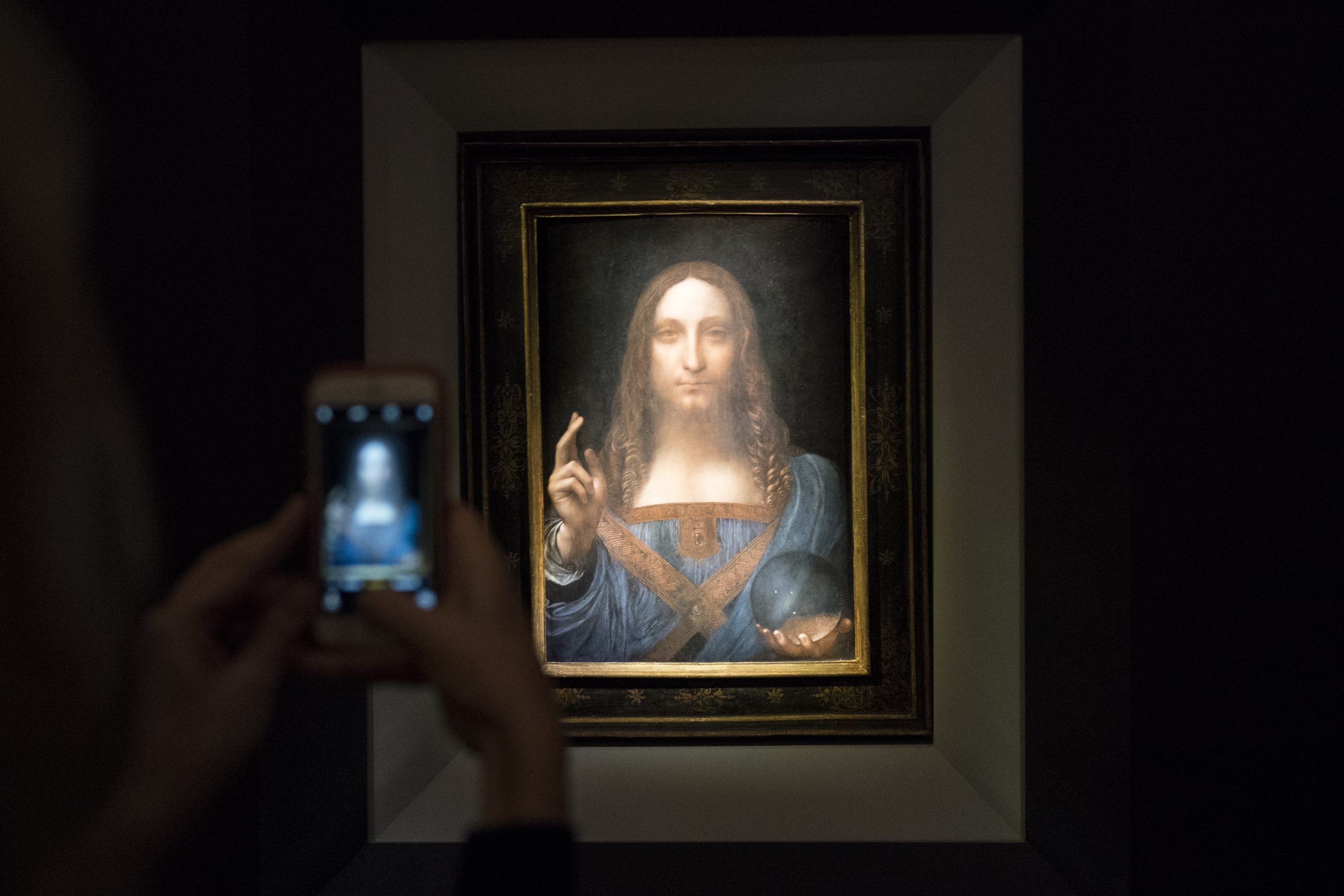The famous and controversial Salvator Mundi has not been seen in public since its memorable Christie’s auction in 2017, when it sold for the eye-popping price of $450 million, making it the most expensive artwork ever sold on the rostrum. The buyer was for a time anonymous, inspiring rampant speculation, but was later revealed to be the little-known Saudi prince Bader bin Abdullah bin Mohammed bin Farhan al-Saud (or MBS, as he is sometimes known). At the time of the sale, Christie’s announced that the so-called ‘Lost Leonardo‘ would go on display at the Louvre Abu Dhabi, but as time passed with no exhibition announced, that seemed less and less likely. Rumors flew that the painting was hanging in the prince’s palace or his yacht—or even that it might have fallen into the
On more than one occasion, the prince has publicly expressed his desire to advance the Kingdom of Saudi Arabia, anchoring development policies on culture and art. MBS’s “Vision 2030” initiative is focused on three main themes: a vibrant society, a thriving economy and national ambition. The plan includes everything from legislative changes to mega urban projects, with the overall aim of diversifying the nation’s oil-industry-centered economy and positioning Saudi Arabia as a global cultural hub. The opening of the Louvre Abu Dhabi in 2017 represented just the first major milestone of this long-term plan of cultural policies and investments. Many other museums, including Guggenheim Abu Dhabi, are set to open in 2026, and most of those institutions will be concentrated on Saadiyat Island, which could become the country’s leading cultural center and a tourist destination.
The Future of the Salvator Mundi in Riyadh
Last month, the country announced another major museum: the Museum of World Cultures in Riyadh, also opening in 2026. According to a statement released by the Saudi Museums Commission, the new museum will “exhibit Saudi and Arabian Peninsula heritage and highlight the cultures that have emerged and expanded over time from Africa across Asia, Europe, Oceania and the Americas.” The release also describes the opening of the institution, which will be designed by Spanish architect Ricardo Bofill, as “a pivotal moment in Saudi Arabia’s cultural renaissance.” The same announcement also revealed that Hartwig Fischer had been appointed founding director of the museum, and while the release celebrated Fischer’s expertise in “leading international cultural institutions and museums,” no mention was made of the fact that the former director of the British Museum resigned unexpectedly last year after that institution discovered that a curator had stolen and then sold 1,800 items over the years, including ancient gems, gold jewelry and other artifacts.
SEE ALSO: An Abu Dhabi-Based Sovereign Wealth Fund Is Investing $1 Billion in Sotheby’s
According to the release, the construction of the new Museum of World Cultures “epitomizes the Saudi Museums Commission’s commitment to establishing state-of-the-art museums that celebrate the global heritage and foster cross-cultural dialogue and understanding.” Building the association between the Salvator Mundi and the institution isn’t a bad first step. The painting, with its intriguing and ongoing story—there’s the Louisiana family who sold the work at auction for just $1,175 in 2005, the ongoing questions about the Mundi‘s authenticity, the related dispute between Russian billionaire Dmitry Rybolovlev and Swiss art dealer Yves Bouvier, the strange preponderance of Salvator Mundi NFTs—arguably is on its way to achieving a level of notoriety similar to that of the Mona Lisa, which became iconic in part thanks to a story that included multiple thefts and attempts to damage it.
But what about the Salvator Mundi Museum of Art in Brooklyn?
You can be forgiven for never having heard of the Salvator Mundi Museum of Art, which also made news this week. The tiny curio museum that claims to have the “largest collection of artwork and ephemera” related to the famous painting was, according to police reports, broken into in the early morning hours of August 17 via a door connecting it to an adjacent restaurant. The perpetrator threw several pieces of Salvator Mundi-branded merchandise on the floor but didn’t abscond with anything from the museum’s collection.
“While we are disheartened by this blatant criminal act, we are relieved that no harm came to our artworks, which hold immense cultural and historical value,” Deborah Choi, chief coordinator of curatorial affairs at the Salvator Mundi Museum of Art, said in a statement. In response to the incident, the museum has initiated a comprehensive review of its security measures and updated its surveillance system. “Our priority is to provide a safe and secure environment for both our visitors and our treasured collections,” Choi added. “We are working diligently to reopen our doors within the next few days, stronger and more resilient than ever.” The Salvator Mundi Museum of Art could reopen as early as tomorrow (August 23).
The NYPD’s District 76 Crime Task Force has launched an investigation into the break-in, and there is talk that the perpetrator might be connected to an organized art crime ring similar to the Dombek gang, which is known for targeting America’s Small Museums for more than twenty years, destroying various artifacts and memorabilia.

The Salvator Mundi Museum of Art is currently showing “What Becomes a Legend – Salvator Mundi and Barbie,” an exhibition built around a Barbie pink version of the iconic painting that according to a press release aims to draw thought-provoking cultural parallels and unexpected similarities between the two cultural idols, highlighting how both “have transcended their initial contexts to become symbols of beauty, desire and idealism.” The painting is a new commission and is accompanied by, what else, an NFT release of Salvator Barbi. It’s quite timely, given the fresh hype and revived attention on the iconic doll, following the success of the blockbuster film Barbie and the major Barbie exhibition at the London Design Museum, on view until February 2025.

